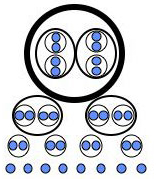
| Publications > Papers |
 |
Toward a Systematic Framework for Research on Dominant Designs, Technological Innovations, and Industrial Change By Johann Peter Murmann and Koen Frenken Research Policy, 2006, Vol. 35, pages 925-952. |
| Download Article New | |
| Abstract: The concept of a dominant design has taken on a quasi-paradigmatic status in analyses of the link between technological and industrial dynamics. A review of the empirical literature reveals a variety of interpretations about some aspects of the phenomenon such as its underlying causal mechanisms and its level of analysis. To stimulate further progress in empirical research on dominant designs, we advocate a standardization of terminology by conceptualizing products as complex artifacts that evolve in the form of a nested hierarchy of technology cycles. Such a nested complex system perspective provides both unambiguous definitions of dominant designs (stable core components that can be stable interfaces) and inclusion of multiple levels of analysis (system, subsystems, components). We introduce the concept of an operational principle and offer a systematic definition of core and peripheral subsystems based on the concept of pleiotropy. We also discuss how the proposed terminological standardization can stimulate cumulative research on dominant designs.
|
|
Author's Note: The origins of this paper date back to the early 1990s. Koen and I independently worked on the dynamics of design variation and standardization as young doctoral students on different sides of the Atlantic. At Columbia University, Michael Tushman invited me to join him in sorting out a few remaining issues in the theory of dominant designs. This proved quite a daunting task. We took a step towards solving some of the puzzles in a joint paper published a few years later (Tushman & Murmann, 1998). The present paper takes another big step in this direction and should make it easier to collect sophisticated data on the connection between technological and industrial change. Koen and I wanted to write a paper that is useful both to the person who is just beginning to study the relationship between technological and industrial change and to the expert who is very familiar with the literature. For this reason we have pulled together what we regard to be the essential analytical tools and worked diligently to articulate a model of dominant designs that agrees with the empirical facts as we know them today. Mathematicians all seem to do their most important work before they reach thirty. Perhaps this paper can prove that this is not true for social scientists.
|
|
|
|
Books
|